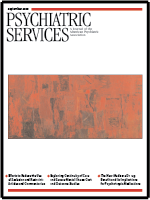Closing Doors on Acute Psychiatric Units: Time to Change?
In acute psychiatric units in general hospitals and in psychiatric hospitals the doors are locked. Restricting the patients to locked units may be unnecessary or inhumane. However, there is resistance to opening the doors. The rationale for locking the doors focuses on at least three factors.
The first is danger for the patient and the community. There is widespread fear that if the doors are unlocked, patients will leave the unit and harm themselves or others. However, this fear is often exaggerated. A vast majority of patients can take responsibility for themselves.
Acutely dangerous patients often need restriction to their rooms, medication, and occasionally restraint. As these patients improve they need space restrictions until they are fully in control. This restriction can be accomplished with individually tailored treatment plans and programs on the ward or unit.
The second factor is staff control and convenience. Staff will say that they feel more secure when the doors are locked. They do not have to watch the patients quite so closely or communicate with the patients as much or as often. Also, frequently staff can remain in the nursing station. When one unlocks the doors it is sometimes necessary to assign a staff member to the entrance to have patients sign in and out, and the staff member must know which privileges are ordered. This change requires staff to spend more time with patients and provides more education for the patients. Patients can talk about themselves, their wishes, and their desires, if one takes the time to listen. When patients cannot assume responsibility, they need ward or room restriction and limits. They should receive these restrictions only after demonstrating the need.
Finally, stigma and hospitalwide resistance play a part in keeping the doors locked. Persons with mental illness are not particularly welcomed into general hospitals or communities. They are looked at with fear and sometimes disdain. This stigma means that opening the doors will require education and support. To open psychiatric units requires cultural change, just as the integration of race and sex on the wards required change. Taking the bars from windows and chains from the patients 200 years ago also required a change in attitude.
When units have been opened, few disasters have occurred and patients are less stigmatized and are better able to integrate into the community. Hospitals should open the doors on psychiatric units to provide a less restrictive environment. Results should be evaluated objectively. Shorter stays, less need for control, healthier outcomes, reintegration into the community, and less stigmatization may all occur.



